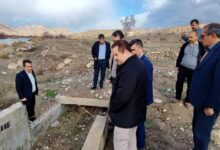A gathering of humanities activists was held during the Islamic Revolution Art Week / “Morteza and Us” meeting
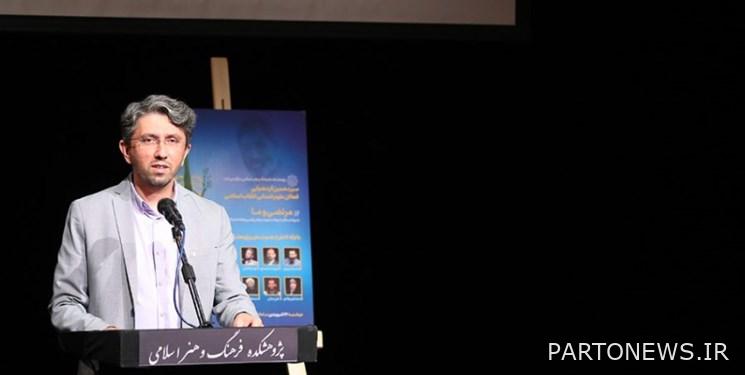
According to Fars News Agency, the 13th gathering of humanities activists of the Islamic Revolution entitled “Morteza and us” was held on Monday evening, April 12, on the pretext of the anniversary of the martyrdom of Seyyed Morteza Avini and Revolution Art Week in the field of art.
Mohsen Denivi had the first presentation of “Morteza and Us” program, which was performed by Alireza Samiei at Mehr Theater of Hozeh Honari. “I got to know Martyr Avini during my university studies and the research I had on him, and I examined his life path,” Denivi said at the gathering. He then read Avi’s books to get to know and understand Avini from his works.
Denivi Babian, who entered the university in 1980 and wanted to study chemistry in the higher stages of chemistry, said: “I was active in the first year of university with high energy and with the belief in Islamic principles, which are the two wings of science and faith, I wanted to acquire knowledge.” .
Referring to the special conditions of the university during the reforms, he said: “Tensions were high and the atmosphere in the universities was not calm, and this atmosphere constantly raises questions about the relationship between science and religion, whether the new science is the wing we are looking for and religion.” Is commensurate with it.
The researcher added: “In the second year of university, while my questions were intensifying, I had a mental problem. One day in the dormitory I came across a book with the introduction to the questions “Why should we develop?” And… »was raised; I read this introduction and from 2002 to 1401 I was involved in these questions for 20 years and the aggregation of these questions was what bothered me and later I realized that these are historical questions of the Iranian nation that have been specifically involved in these questions for about 100 years. We are and the Islamic Revolution has somehow answered these questions.
Denivi emphasized that my world was formed with the book of Martyr Avini, and noted: From 1981 to 1991, we discussed the books of Martyr Evini in the form of workshops in the country’s universities. This incident also had consequences, because the view of Martyr Avini in some cases has stings that are questionable.
He said: “It was in 1980 that the leadership of the Charter of Free Thought was announced, and in 1982, we were reviewing Martyr Avini’s discussions about creation; In that workshop, we noticed the difference between the opinion of Martyr Evin and Martyr Motahhari, and we received remarks about its design at the university.
He considered the thought of Martyr Avini as biting and added: “I highly recommended studying the works of Martyr Avini in the past because his pen, expression and look are exciting, but I have been talking about him cautiously for about 10 years because they were on the path of change and change.” Their opinions still need to be corrected and optimized, and we must deal with them more carefully.
Martyr Avini was different from what we had in mind about the martyrs
Mohammad Reza Vahidzadeh also spoke about the relationship between the people of the 60’s and Martyr Avini and the concept of self-sacrifice and martyrdom and said: “Martyrdom in our neighborhood in the sixties had a different atmosphere because it was always ongoing.”
He emphasized that the concept of self-sacrifice and martyrdom was tied to our lives and created an image for us that we wanted to touch this image, but things delayed this access.
Vahidzadeh considered his acquaintance with Martyr Avini to be related to his student days and stated: Martyr Avini was the foundation-breaker of the image of martyrdom. The martyr we were looking for in people like Martyr Hemmat, Kharazi and Bakri; Martyr Avini broke this image for us in several ways, the first issue being related to the time of his martyrdom, so the time of his martyrdom was an event that said that the game is not over yet.
This cultural activist introduced Martyr Avini as an intellectual elite and added: Martyr Avini was different from what we had in mind about the martyrs, so Martyr Evini changed our image of martyrdom.
He pointed out: “We were faced with the role models who watched movies, were artists and painted, and did not have the innocence of a positive child in themselves;” He fought and sometimes disturbed the city with his speeches and showed another relation of the concept of self-sacrifice and martyrdom.
Avini put the alphabet of revolutionary intellectuals in our mouths
Vahid Yaminpour also said in this gathering that Martyr Avini played the role of a hinge in the intellectual process of the Islamic Revolution to transfer the Revolutionary Front from the ideological space to the intellectual of the Revolution, which is a unique role. A decade had created an atmosphere appropriate to the ideological atmosphere and official narrative of national and global events.
Referring to the end of the war, he said: “After the war, if we did not have people to provide us with a platform for thinking to answer deeper questions and more serious concerns and formulate ideals and concepts, we would face a problem and our teacher in This period is Avini’s martyrdom and Avini put the alphabet of revolutionary intellectuals in our mouths.
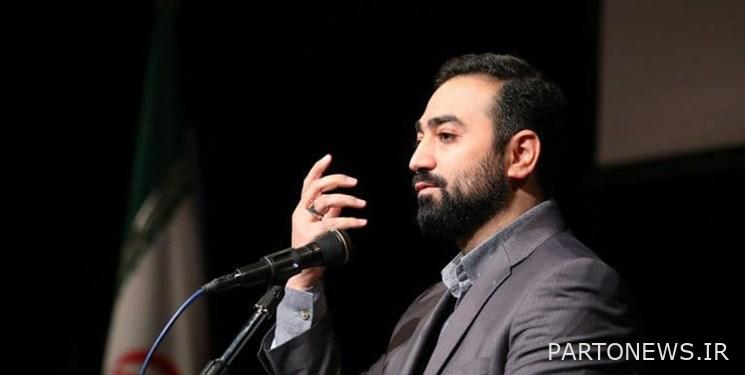
The Deputy Minister of Sports and Youth stated: Martyr Avini marked several important events; It made possible for the intellectual body of the Islamic Revolution to oppose the official policies of the Islamic Republic, which means that what statesmen and politicians say is not revelation, and opposition to it is not opposition to the principle of the Islamic system. It allowed us to move from political excitement to political thinking. It made it possible for us to critique rhetoric and go beyond simplification in the field of civilization, which included cinema, and kept us away from rhetoric in the field of art and civilization.
Yaminpour, emphasizing that Martyr Avini overcame us through political obstruction after the Holy Defense, said: Dr. Fayyaz in a critique believes that Martyr Avini led us astray in the culture of the Holy Defense because at that time we needed rationality to understand issues such as war, but Avini mystified the subject with mysticism and mystical literature and removed us from rationality; I do not see this as the case. I was a teenager in the 1970s, and the atmosphere of the Islamic Revolution was full of depression, sadness, and worries about the future; He probably sees Mr. Fayyaz Avini involved in this space, but I think Avini, with his narration, took us through this depressed space and taught us to produce a work from this glorious experience and talk about it with new literature.
He pointed out: He was the beginning of a new way for the culture and art of the revolution by founding art criticism in the mouth of the revolution.
Avini saved us from simplification in the face of life, civilization and civilization
Mohammad Mehdi Sayar in the other part of this gathering, stating that Avini’s martyrdom opened the way for his books to the house of religious people, said: Avini’s martyrdom was the first work he left about his books; Of course, before that, the voice of his narration was in the house of all of us, but we thought that this voice is the essence of the war that is narrated, and the sound and caption of the narration of Fatah was such that we did not think there were people who had conflicts with each other. Have.
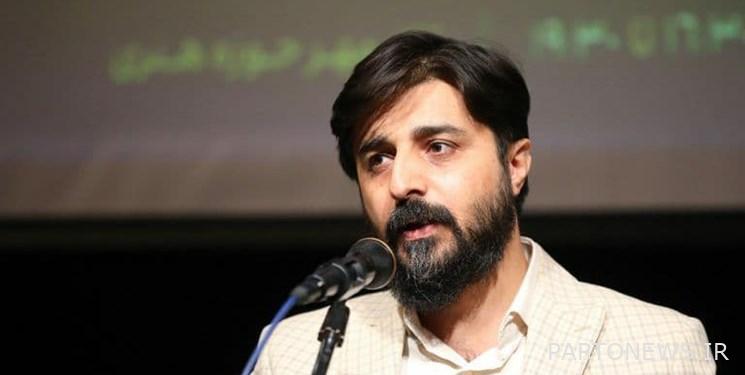
Regarding the first encounter with Avini in his life, he said: “Avini saved me and many others from a simplification in the face of life, life and civilization.” Avini’s testimony opened the door to banned debates on television, as Mirshkak could be seen on television these days. Avini’s writings in my adolescence were so different that we could easily divide people into two groups, those who read Avini and those who did not read Avini; People who have not read Avini always have a crude and immaturity for me in the face of science and civilization.
The aesthetics and spirituality of Martyr Avini was always in touch with art and thought and nihilism
Hojjat-ul-Islam and Muslims Masoud Dayani also addressed the various aspects of Martyr Avini in this ceremony and said: Avini had aesthetics and wrote beautifully and spoke beautifully and for those of us who had no choice but Shariati, Martyr Avini was the second choice.
He added: “I have heard that one of the thinkers has said that aesthetics is one of the problems of the Islamic Republic and such a view is correct in my opinion because it is close to the view of Martyr Avini.”
Diani continued: Martyr Avini was spiritual and had a world of spirituality. The spirituality of the Avini era made Avini different. What we learn from Avini was a spirituality in migration and in search of spirituality.
Saying that the aesthetics and spirituality of Martyr Avini was always in touch with art and thought and nihilism, Diani said: Avini gave our generation the capacity to love him and read modern novels and not to leave and not to be distracted.
He added: “The concept of province was a prominent element for Avini because it provided him with the possibility of worldly life.” He believed that the way of life would go well until the leadership of Imam Khomeini and then Mr. Khamenei. Avini’s governorship had connected him to a vast network of popular hearts that made him different. By tying himself to the province, Avini had a huge capacity for love and popularity. His interest in Ayatollah Khamenei was also absolute and deep. I have never heard from anyone that Avini believed that leadership was wrong because he loved and believed in him.
“Avini believed in freedom and saw it as a necessity,” Diani said. He believed that the lack of freedom was to the detriment of the revolution and the revolutionaries.
In the end, he said: “Avini’s martyrdom was another reason for distinguishing it from other artists of the same level, because none of the writers were martyred in Avini’s category.”
Mehdi Kafash, another presenter of the ceremony, spoke in a different way by reading the text and heart of Avini and the importance of the years of his presence and the years after his martyrdom.
I learned a kind of practical behavior from Avini
Mohsen Safaei-Fard also spoke about his adolescent experience at the Avini Cultural and Artistic Center in Kashan, his hometown, and spoke about the knowledge of Martyr Avini at that center.
He, who started his work with the solo group in this center, said that the center continued to work and added: “Years later, this center disintegrated and was divided into different political groups until I decided to do it again at an older age.” To launch. But due to my family’s interest in music and strong opposition to it, I gave up.
Safaei-Fard continued: “Finally, at Allameh University in Tehran, we went to the camp of the Path of Light together with university students, and I met Rohollah Namdari, who was from Izeh, and Amir Asnaashari, who was a singer and a musician.” He knew Avini very well. He recounted Avini’s thoughts to me in this acquaintance, and I had just learned many of Avini’s concepts at this university, which I had read a lot before.
In the end, he said: “I learned a kind of practical behavior from Avini and later I used it in the field of music.”
Avoid turning Avini into a showcase
Mohammad Reza Shafa, the film producer of “Twenty-One Days Later”, also said in his account of Martyr Avini that Martyr Avini was the motivation of many of our fellow students at the university: “For any phenomenon like Martyr Avini after leaving this world , There is a risk of incomplete representation of that phenomenon.
Shafa added: “Avini was a full-fledged Hezbollah and revolutionary and had different views on cinema that he tried to address after the revolution.” An example of this is the support of Martyr Avini for the film from Karkheh to the Rhine, which at that time was opposed by many in the revolutionary and religious community.
In the end, he said: Martyr Avini had an idea and thought that we should avoid turning it into a showcase work.
A good cultural director is the cultural director of a martyr
Shahab Esfandiari in this program, referring to a live TV program that was broadcast 10 years ago with his presence, addressed the cultural management of the country today and the type of management of Martyr Avini and said: “A good cultural director is the cultural director of a martyr.” Like Avini who achieved the grace of martyrdom.
Esfandiari added: “One of the less seen aspects of Avini as a cultural director.” The same subject that in the last years of his life faced him with many difficulties. In general, cultural management in our country is very difficult and we do not have a good cultural director. Also, a successful cultural director has never been supported and appreciated and is not given the necessary attention. On the other hand, if a successful art production is formed under personal cultural management, he will not be appreciated, but his artists will be appreciated. On the contrary, if an anomaly is produced under personal management, that manager will undoubtedly be attacked, and this kind of approach will cause our cultural managers to move very slowly and cautiously.
In the end, he said: “Today, we are facing a crisis of cultural management in the country, which has been neglected.”
With how Morteza Avini died, he became a mirror of how he lived
As the final presentation of the 13th gathering of humanities activists of the Islamic Revolution entitled “Morteza and us”, Fatemeh Delavari spoke about how she met Morteza Avini from a photo that her brother brings home for the first time and installs on the wall.
In this narration, Delavari, while reading the pre-written text, said: Morteza Avini, with how he died, became a mirror for how he lived.
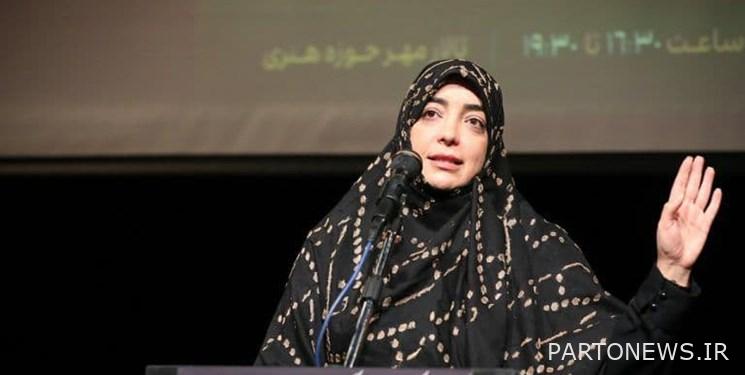
According to Fars News Agency, the meeting between “Morteza and us”; It was held on the pretext of the anniversary of the martyrdom of Martyr Morteza Avini and the Revolution Art Week. This event aims to hear the lived experience of a number of new generations of people of art and thought; A generation that, although it did not understand Morteza Avini during his lifetime, but sees a strong rejection of his influence on the path of his intellectual, artistic and professional activity, presented his views in this meeting of a group of professors and researchers in the field of humanities.
End of message /

